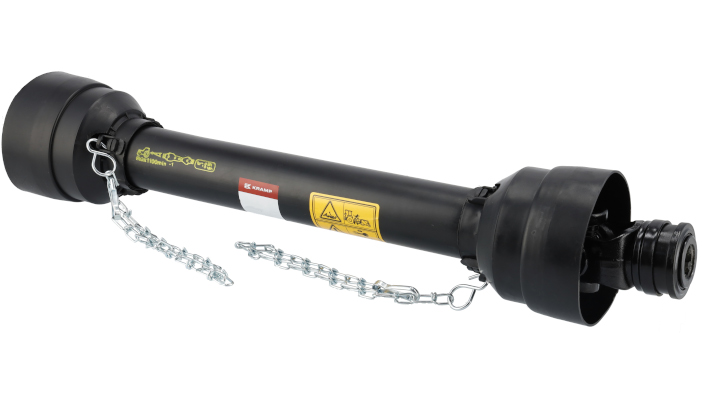Kramp has announced a new range of PTO shafts, stating that these will be available at a competitive price.
The shafts are manufactured by Comer and marketed under the Kramp name, with full availability through the company’s dealer network.
It ranges from T10 to T60 series shafts, offered with or without clutches. The PTO guards are black to provide greater UV resistance when compared to the standard yellow models.
“We believe farmers will find these PTOs are very competitively priced, and it’s a named brand from a recognised manufacturer,” says Adam Hubbard, product specialist for Kramp. “To obtain an exact price, farmers should contact their nearest Kramp dealer.
“There is also the added benefit that any spare parts, such as a yoke or universal joint, are readily stocked by Kramp and its dealers, meaning farmers can expect next-day delivery or same-day collection.”
Safe PTO handling
Alongside the launch, Adam has provided a series of tips for safe maintenance of PTO shafts.
- Tractor: Ensure it is made safe, the handbrake is fully on, put all controls and gears in neutral, stop the engine and remove the key before working on a PTO.
- Guard chain: When hooking up the chain, double it back through the D-link and hook it onto itself. This will shorten the chain length and prevent it from being wrapped around the guard tube. The guard should then only be able to turn 90 degrees with the available slack on the chain.
- Regulation: Farmers should be aware of Regulation EN12965. Only collar locks are allowed on the primary drive shaft connected to the tractor, which means push-pin or certain collar locks with exposed springs are prohibited on new machines. Push pins may be used on second-hand machines, but it is imperative for new machines or repairs that an authorised collar lock is fitted.
- PTO guard: It is a further statutory requirement that the PTO guard should overlap the joint by a minimum of 50mm when in a straight position. This ensures the guard covers the moving parts.
- PTO installation: The most common cause of PTO failure is an insufficient overlap of the PTO profile tubes. When the PTO is correctly installed, the overlap should be less than 33% longer than the shaft length.
- PTO adaptors: Refrain from using PTO adaptors on the main drive and limit the maximum power they transmit to less than 30 kW. Instead, to be safe, change the yoke on the PTO to be suitable for the implements it needs to operate.
- Working with PTOs: Avoid using PTOs at an excessively wide angle. If an angle is needed to operate the machine, it may be necessary to install an H-type joint. Additionally, consider the vertical angle from the tractor to the machine, which can accentuate the horizontal alignment.
- Operator training: All new operators using a tractor powering a PTO should be fully briefed on PTO safety, and experienced operators should be regularly reminded to avoid complacency.


